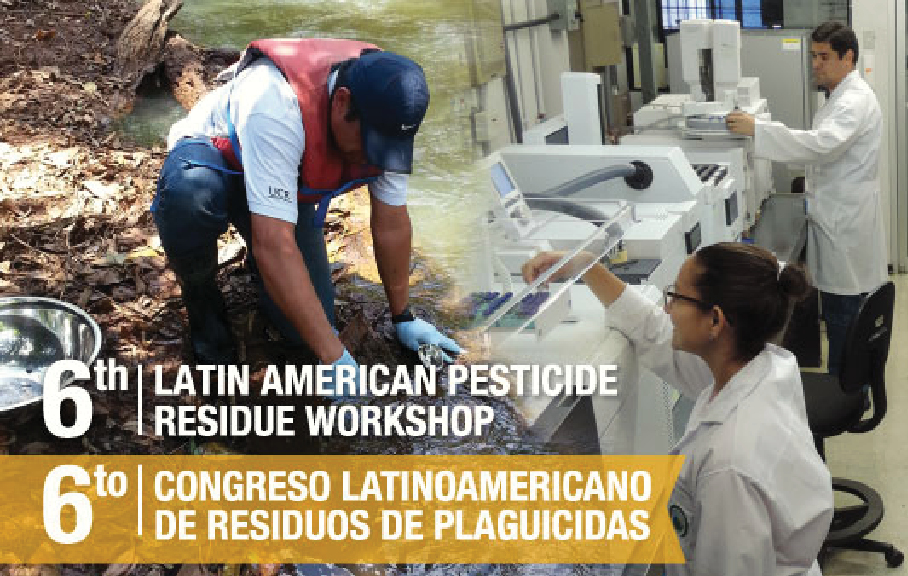Ecological Risk Assessment Workshop for Central America
Substantial amounts of pesticides are used in agriculture in Latin America, in both crops for local consumption and export crops such as bananas, plantains, and pineapples. It is important that the pesticides used do not pose a risk to human health and the environment.
Regarding the environment, it is proposed that an Ecological Risk Assessment Workshop for Central America be held in Costa Rica, in order to:
promote and transfer current scientific knowledge on ecological risk assessment
highlight the advantages and disadvantages of risk assessment procedures
provide a guidance document on the development of ecological risk assessment
This guidance document will give participants more detailed information on risk assessment. However, it is not intended to be a comprehensive handbook, but rather to enable participants to ask the right questions when risk assessments are required.
It is intended that the workshop in Costa Rica will form an integral part of the 6th Latin American Pesticide Residue Workshop (LAPRW 2017, 14-17 May, https://laprw2017.fundacionucr.ac.cr), a biennial forum for discussion in which different concepts and future developments are presented on pesticide residues in food and the environment. Key partners will be CropLife International and the Red Analitica de Latino América y el Caribe (RALACA).
For more information about this project contact the Task Group Chairs Elizabeth Carazo Rojas or John Unsworth <unsworjo@aol.com>www.iupac.org/project/2016-025-1-600
©2017 by Walter de Gruyter Berlin/Boston
Articles in the same Issue
- Masthead - Full issue pdf
- Contents
- President’s Column
- On the Path to Rewarding Times
- Features
- Taking IUPAC Literally: Woodward’s Pure and Applied Chemistry Words
- The Periodic Table (continued?): Eka-francium Et Seq.
- Chemistry Organizations in a Changing World
- IUPAC Wire
- IUPAC and the Organisation for the Prohibition of Chemical Weapons Take Partnership to New Level
- IUPAC Announces the Names of the Elements 113, 115, 117, and 118
- IUPAC Periodic Table of the Elements—Updated Release
- Gender-based Harassment in the Practice of Science
- ICSU to Merge with ISSC
- Remembering Peter Greaves Taylor Fogg (1929-2016)
- Stamps International
- Woodward’s Birth Centennial
- Project Place
- Environmental Fate and Risks of Nano-enabled Pesticides
- Ecological Risk Assessment Workshop for Central America
- A Critical Review of Reporting and Storage of NMR Data for Spin-Half Nuclei in Small Molecules
- Guides in Metrology
- Bookworm
- Successful Drug Discovery
- Making an imPACt
- Source-based Nomenclature for Single-strand Homopolymers and Copolymers (IUPAC Recommendations 2016)
- Comprehensive Definition of Oxidation State (IUPAC Recommendations 2016)
- Glossary of Terms Used in Developmental and Reproductive Toxicology (IUPAC Recommendations 2016)
- IUPAC Provisional Recommendations
- Terminology of Bioanalytical Methods
- Nomenclature and Terminology for Dendrimers with Regular Dendrons and for Hyperbranched Polymers
- Conference Call
- WMFmeetsIUPAC
- Chemistry Education
- Green Chemistry
- Solid State Chemistry
- Where 2B & Y
- Macro- and Supramolecular Architectures and Materials
- POLYCHAR World Forum on Advanced Materials
- Coordination and Bioinorganic Chemistry
- Chemists and IUPAC: Taking Responsibility and Taking Action
- Small Satellites for Space Research
- Mark Your Calendar
Articles in the same Issue
- Masthead - Full issue pdf
- Contents
- President’s Column
- On the Path to Rewarding Times
- Features
- Taking IUPAC Literally: Woodward’s Pure and Applied Chemistry Words
- The Periodic Table (continued?): Eka-francium Et Seq.
- Chemistry Organizations in a Changing World
- IUPAC Wire
- IUPAC and the Organisation for the Prohibition of Chemical Weapons Take Partnership to New Level
- IUPAC Announces the Names of the Elements 113, 115, 117, and 118
- IUPAC Periodic Table of the Elements—Updated Release
- Gender-based Harassment in the Practice of Science
- ICSU to Merge with ISSC
- Remembering Peter Greaves Taylor Fogg (1929-2016)
- Stamps International
- Woodward’s Birth Centennial
- Project Place
- Environmental Fate and Risks of Nano-enabled Pesticides
- Ecological Risk Assessment Workshop for Central America
- A Critical Review of Reporting and Storage of NMR Data for Spin-Half Nuclei in Small Molecules
- Guides in Metrology
- Bookworm
- Successful Drug Discovery
- Making an imPACt
- Source-based Nomenclature for Single-strand Homopolymers and Copolymers (IUPAC Recommendations 2016)
- Comprehensive Definition of Oxidation State (IUPAC Recommendations 2016)
- Glossary of Terms Used in Developmental and Reproductive Toxicology (IUPAC Recommendations 2016)
- IUPAC Provisional Recommendations
- Terminology of Bioanalytical Methods
- Nomenclature and Terminology for Dendrimers with Regular Dendrons and for Hyperbranched Polymers
- Conference Call
- WMFmeetsIUPAC
- Chemistry Education
- Green Chemistry
- Solid State Chemistry
- Where 2B & Y
- Macro- and Supramolecular Architectures and Materials
- POLYCHAR World Forum on Advanced Materials
- Coordination and Bioinorganic Chemistry
- Chemists and IUPAC: Taking Responsibility and Taking Action
- Small Satellites for Space Research
- Mark Your Calendar


